There are so many of these creatures in our small pond. They have legs but move on their sides. What are they? The tadpoles in the pond are very small and I wondered if are these taking their food? Hazel Caird, Malahide
These are freshwater shrimps – Gammarus – which are amphipods in the group crustaceans. They are detritus feeders and eat dead plants, dead insects and other organic matter. Tadpoles when very young eat algae and other vegetable matter but will soon move on to eating small insects and other small water creatures. So your water shrimps had better look out.
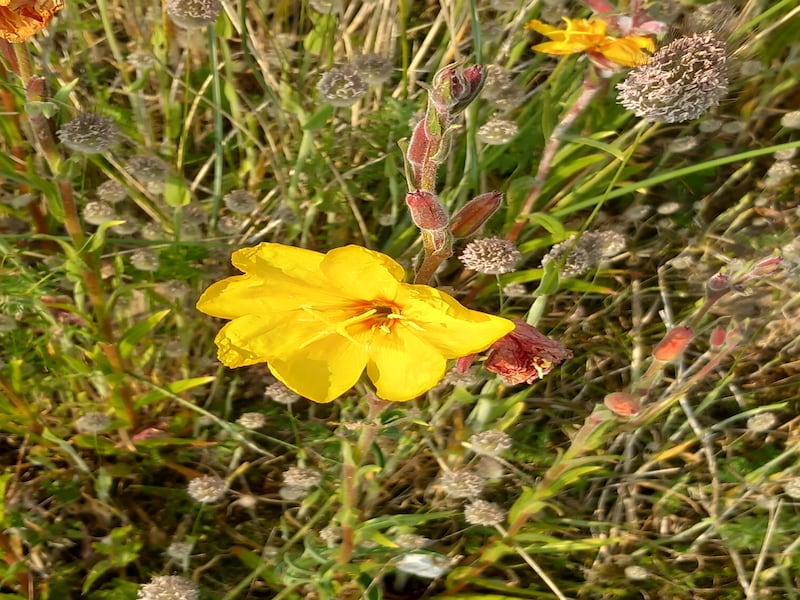
I saw this yellow flower all over the sand dunes at Curracloe in Wexford last weekend. I haven’t noticed it on dunes in the west of Ireland. Mary O’Donnell, Galway
It is the fragrant evening primrose, Oenothera stricta, a garden escapee first recorded in the wild “near Rosslare” by Praeger in 1934. It still occurs in the wild in this general area – the Curracloe sand hills and open dunes fringing the Raven further south. There are a few records for Dublin and Cork but none at all from the west.
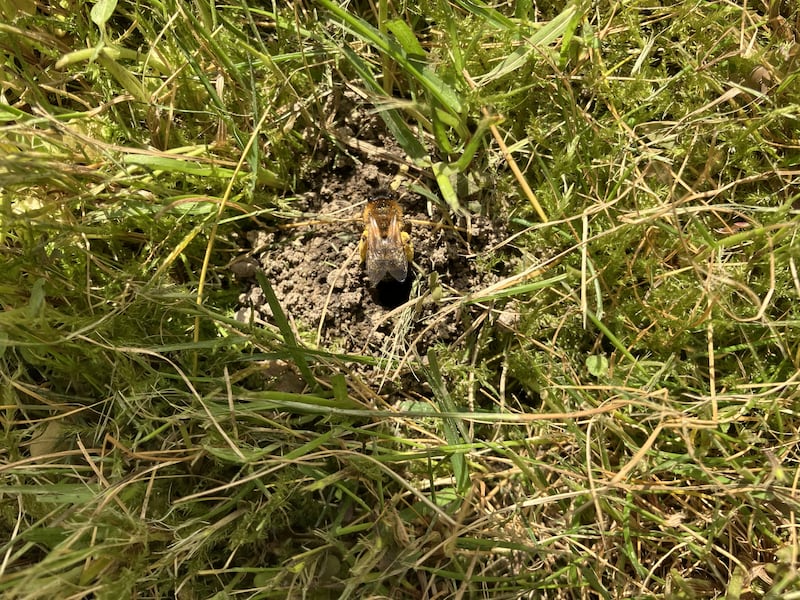
At this time every year, ground nesting bees, like the one shown in my photo, burrow out of the lawn, leaving mounds of dry earth around the holes. They have a burnt-orange-coloured head and bright yellow flanks. Could you tell me what they are? Chris Wright, Co Dublin
This is a somewhat faded female buffish mining bee (Andrena nigroaenea), a large early flying species of mining bee. This is one of our 80 species of solitary bee and is categorised as vulnerable, so you should mind it. These bees do not form a colony or have a queen. Each female excavates its own nest tunnel – in this case in the soil in your lawn – lays one or two eggs there, stocks it up with pollen and nectar as food for the emerging grub, and then seals the burrow. The National Biodiversity Data Centre has produced a poster of all 80 species, which is free to download.
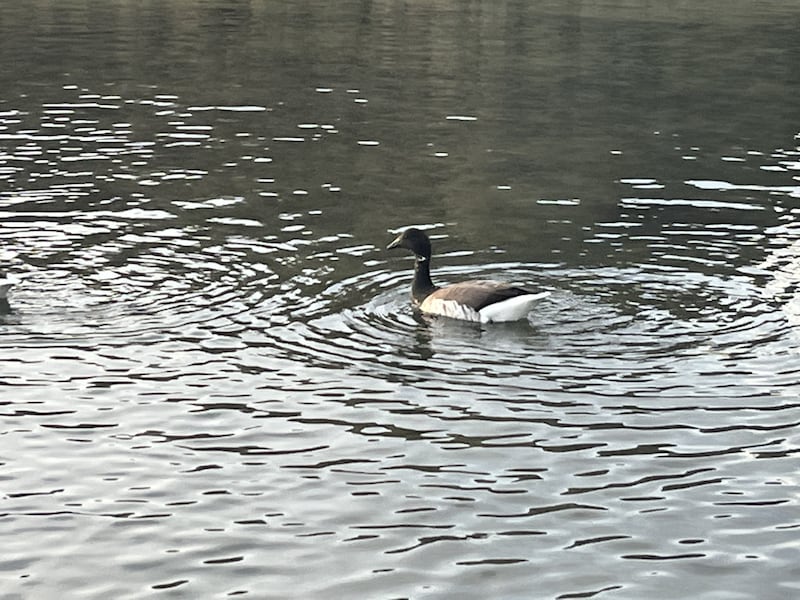
While walking along the shore in April, we spotted these aquatic birds and aren’t sure what type they are. Beau Felton, Co Dublin
These are brent geese, which breed on lowland tundra plains in Arctic Canada. They arrive in Ireland by the end of October and spend winter along our coasts, feeding on seagrass growing in intertidal areas. They start heading back to the breeding grounds in April and can fly up to 1,600km nonstop.
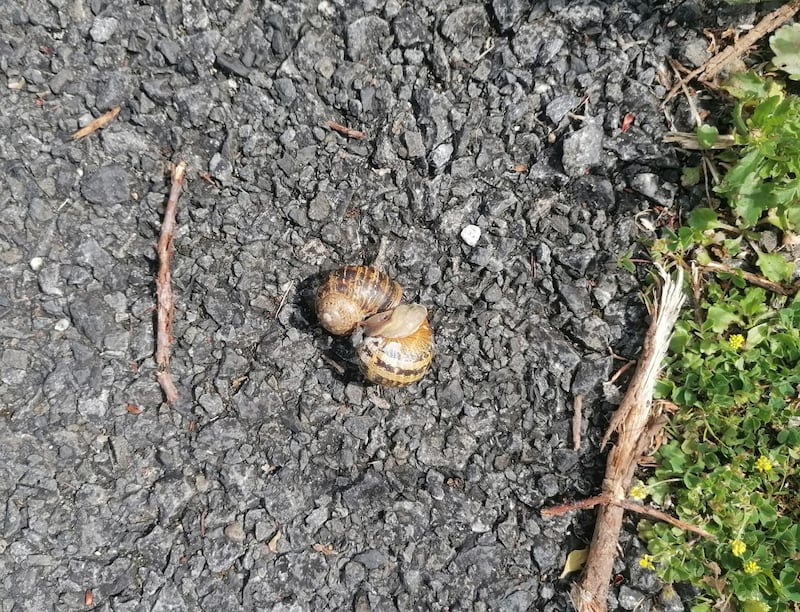
What were these snails doing on the Waterford Greenway last week? Sean O Duibhir, Cork
Out on a date by the look of things as it is too late in the year now for them to be huddled together hibernating. Snails are hermaphrodites, which means they have both male and female parts, but they must mate with another snail before they can lay eggs. Mating, a quite complicated process, involves them emerging from their shells under the cover of darkness, snuggling up together and shooting a thin, sharp pointed structure known as a love dart into each other to get proceedings under way. It all takes a considerable amount of time and results in each snail laying up to 100 eggs in the soil several weeks later.
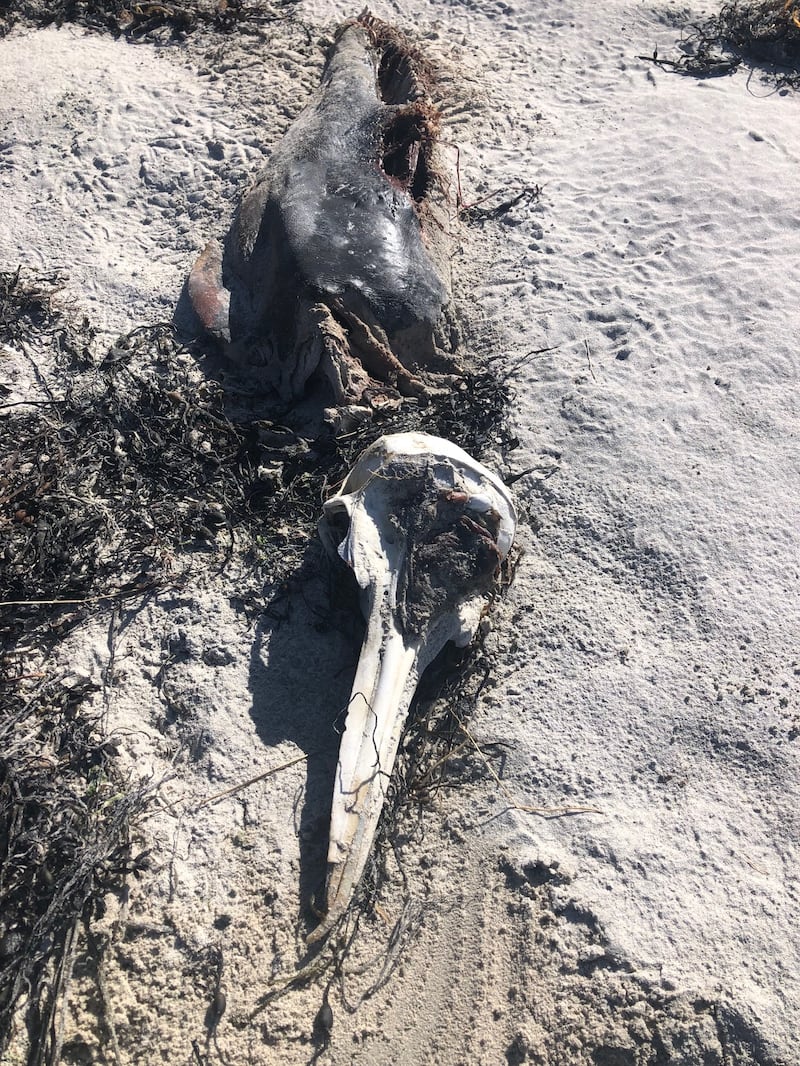
Can you identify this skeleton I recently came across on the beach. Is it a seal skeleton? Pamela Madigan
Not a seal but a dolphin. It may have been already dead when washed up – it is quite badly decomposed.
Please submit your nature query, observation, or photo with a location, via www.irishtimes.com/eyeonnature




